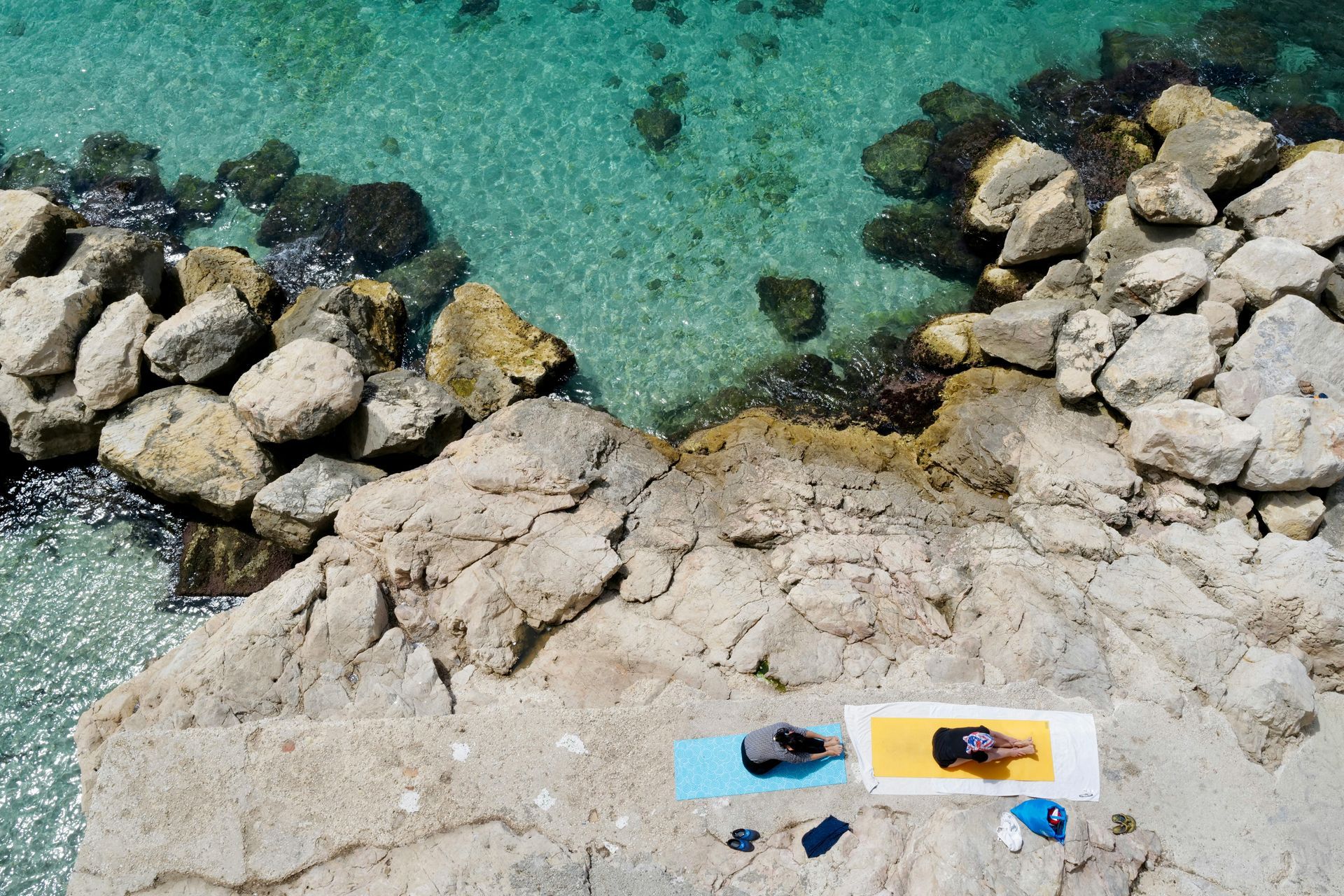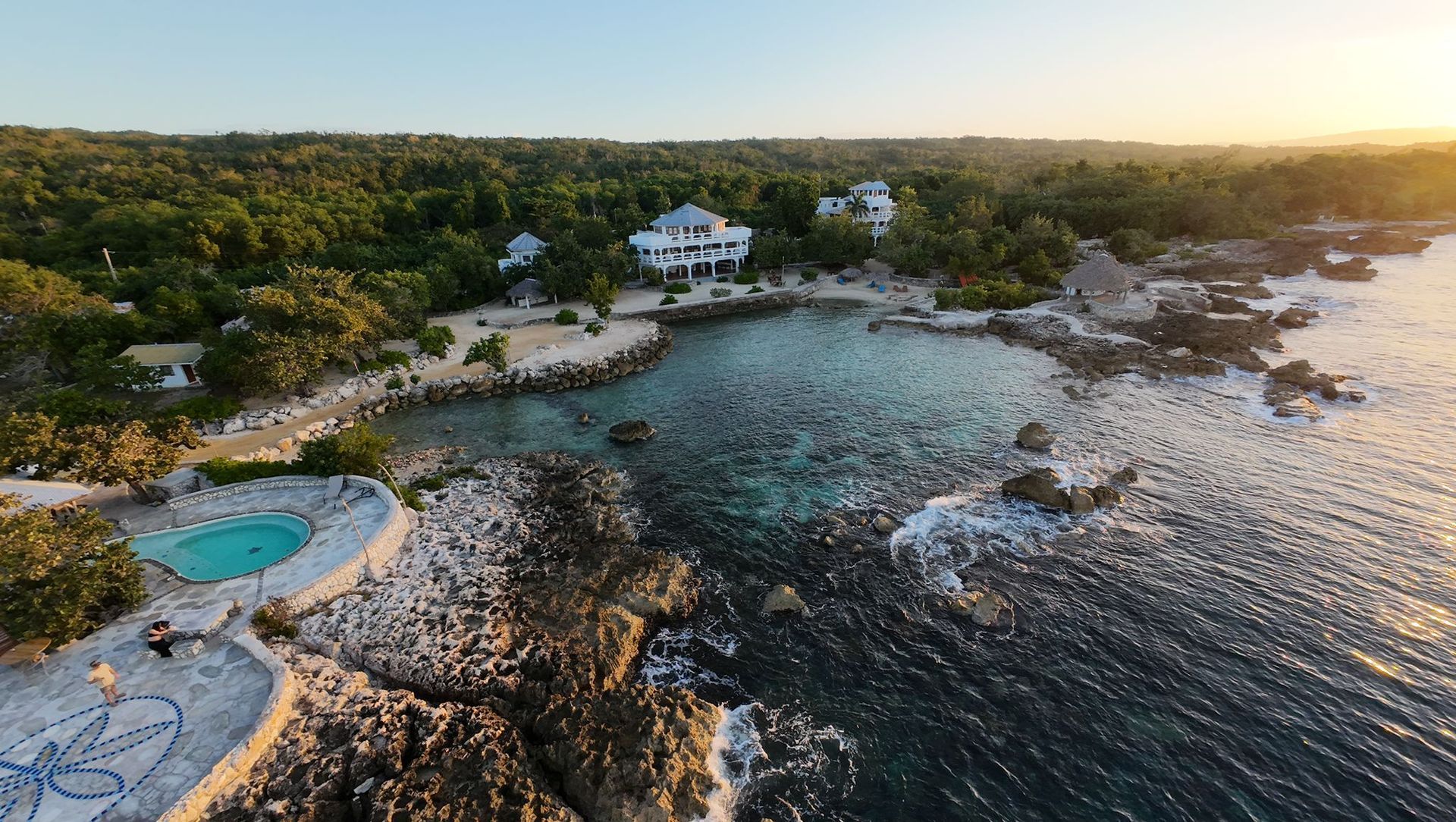Yoga by the Sea: “Blue Exercise”- Why Practicing Yoga Outdoors Amplifies Its Benefits
By Dr. Adam Abodeely, MD, FACS, FASCRS, MBA
Coral Cove Wellness Resort | www.coralcovewellness.com
There’s something deeply restorative about taking a deep breath of the ocean air, feeling the warmth of the sunrise on your skin, and moving your body in harmony with the natural rhythm of the sea. At Coral Cove Wellness Resort, yoga is more than just a practice—it’s a sensory immersion and a powerful tool for mind-body renewal.
In recent years, research has confirmed what many wellness seekers have intuitively felt: practicing yoga outdoors—especially in natural settings like the seaside—amplifies both physical and mental benefits far beyond what we experience indoors.
Nature as a Healing Partner in Yoga
Regardless of your favorite form of yoga, or your skill level this activity has proven countless benefits—improved flexibility and strength, reduced stress, improved breathing—but when practiced in natural environments, these benefits are intensified. A 2013 study published in Extreme Physiology & Medicine concluded that
exercising in natural outdoor environments leads to significantly greater feelings of revitalization, increased energy, and reduced tension, anger, and depression
compared to indoor environments (Thompson Coon et al., 2013). The interaction between movement, breath, and natural elements creates a synergistic effect that can’t be replicated in a traditional indoor yoga studio.
This phenomenon is often referred to as
"green exercise"—a term that blends movement with nature exposure. But in places like Jamaica, where the sea becomes your backdrop, we expand that to
"blue exercise."
Practicing yoga near the water can reduce cortisol levels, enhance serotonin production, and even support cardiovascular health.

The Science of Outdoor Movement: Why Nature Enhances Health and Wellness
It’s no coincidence that we feel a sense of calm when walking barefoot on the beach or a burst of clarity after deep breathing in fresh ocean air. Science is increasingly validating what ancient traditions and intuitive wisdom have long known: nature is a powerful ally in healing the body and mind.
1. The Biophilia Hypothesis
The Biophilia Hypothesis, proposed by biologist E.O. Wilson, suggests that humans are biologically programmed to seek connection with nature. When we’re in natural environments—especially those rich in sensory diversity like oceanfront landscapes—our parasympathetic nervous system (the "rest and digest" system) is activated, reducing stress and promoting relaxation.
2. Physiological Benefits
· Lower Cortisol: Nature-based movement has been shown to significantly reduce cortisol—the stress hormone—which can help improve sleep, immunity, recovery, and digestion (Thompson Coon et al., 2013).
· Heart Health: Outdoor yoga can help lower blood pressure and heart rate while boosting cardiovascular resilience.
· Vitamin D Boost: Sunlight exposure increases vitamin D production, critical for immune regulation, mood balance, and bone health.
3. Mental Health and Motivation
A 2025 systematic review of over 700 individuals showed that outdoor physical activity improves mental health, physical activity levels, and muscular fitness—particularly in vulnerable populations like cancer survivors (Ortega-Gómez et al., 2025). Participants reported elevated mood, reduced fatigue, and greater motivation to maintain regular activity routines.
4. Cognitive Restoration
The Attention Restoration Theory (ART) posits that nature promotes cognitive recovery. Natural surroundings reduce mental fatigue and enhance:
· Focus and memory
· Emotional regulation
· Creative problem-solving
Outdoor yoga promotes "soft fascination" - a state of effortless attention which allows the brain to rest and recover- through the calming rhythm of the ocean and breeze—improving clarity and deepening meditative states.
5. Anti-Inflammatory and Immune Support
Natural environments may reduce systemic inflammation and support immune system balance by increasing natural killer (NK) cell activity, a marker of innate immune function. Combined with the synergistic anti-inflammatory effects of yoga, this creates a potent foundation for long-term wellness.

Experience Outdoor Yoga at Coral Cove Wellness Resort
At Coral Cove Wellness Resort in Jamaica, we’ve created a sanctuary where yoga, nature, culture, and wellness converge. Our oceanfront yoga platforms, surrounded by the lush coastline and the sounds of the sea, offer the ideal setting to realign your body, breath, and mind.
Whether you’re joining a sunrise flow, engaging in a water-based class in our cove, or unwinding with evening breathwork as the sun sets over the Caribbean Sea, each session is designed to restore vitality, reduce stress, and reconnect you with the healing power of nature.
Begin Your Wellness Journey with Us
Yoga, or any form of exercise, doesn’t just belong in a studio or gym. Wellness begins with intention—and sometimes, that means stepping outside, breathing deeply, and moving in rhythm with the earth and sea.
We invite you to experience the transformational power of outdoor yoga and holistic healing in paradise. Join us at Coral Cove Wellness Resort and rediscover your path to balance, beauty, and inner peace.
Wishing you health and harmony,
Dr. Adam Abodeely MD, FACS, FASCRS, MBA
CEO, Coral Cove Wellness Resort
Learn more or book your stay at www.coralcovewellness.com
References:
1. Sahawneh,P. Factors Influencing Skin Health from Within. J Integrated Health 2024;3(1):156-163.DOI: org/10.51219/JIH/pamela-sahawneh/26.
2. Goodman GJ, Armour K, Ong D, et al. An absence of imperfections: A proposed framework for defining, assessing, andachieving skin glow. J Cosmet Dermatol. 2024;23:161-171. doi:10.1111/jocd.16063
3. Dumoulin M, Gaudout D, Lemaire B (2016) Clinical effects of an oral supplement rich in antioxidants on skin radiance in women, Clinical, Cosmetic and Investigational Dermatology, , 315-324, DOI: 10.2147/CCID.S118920
4. Erdman, S. E., and Theofilos Poutahidis. "Probiotic ‘glow of health’: it's more than skin deep." Beneficial microbes 5.2 (2014): 109-119.


